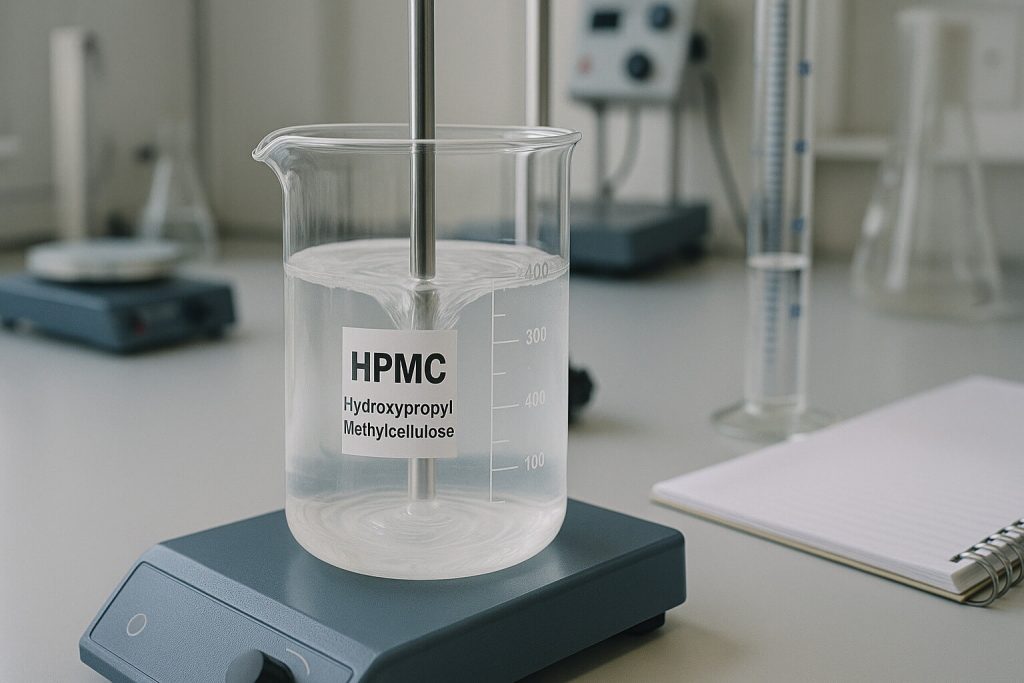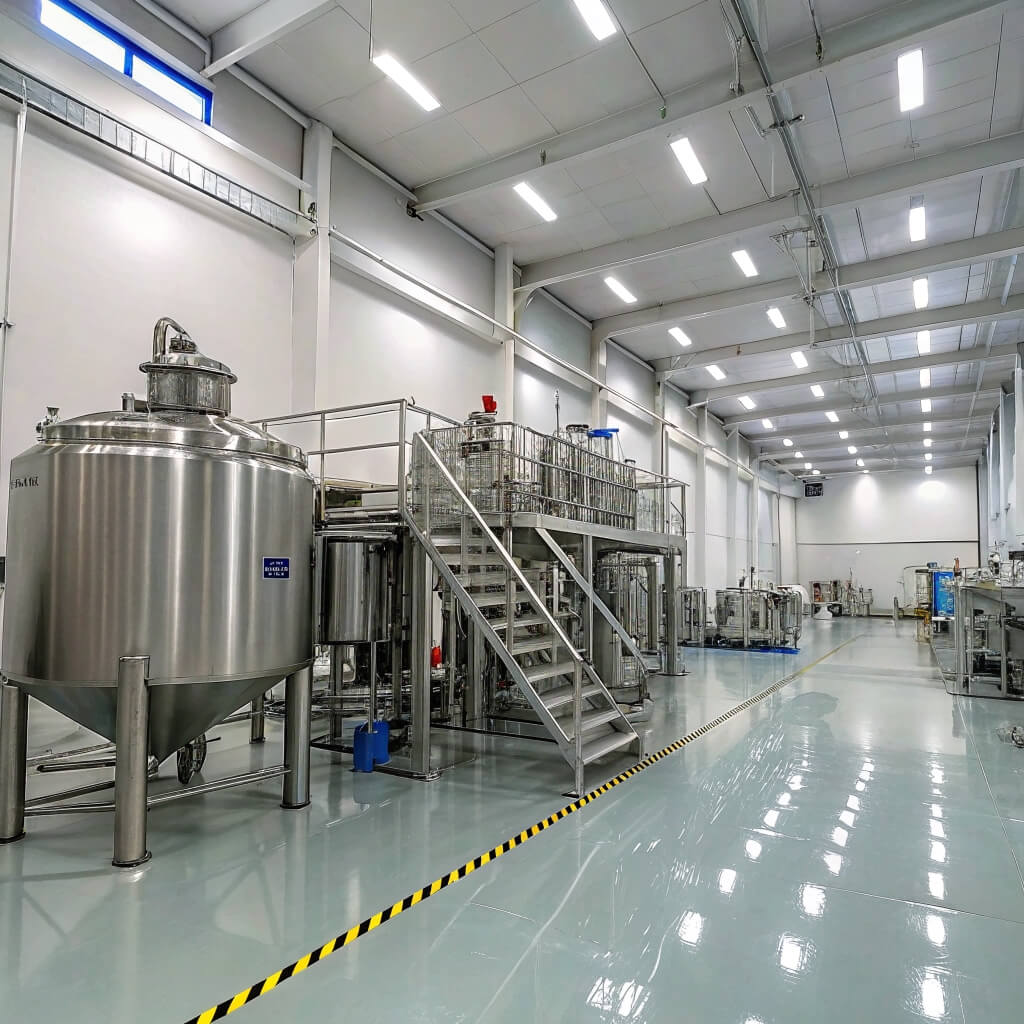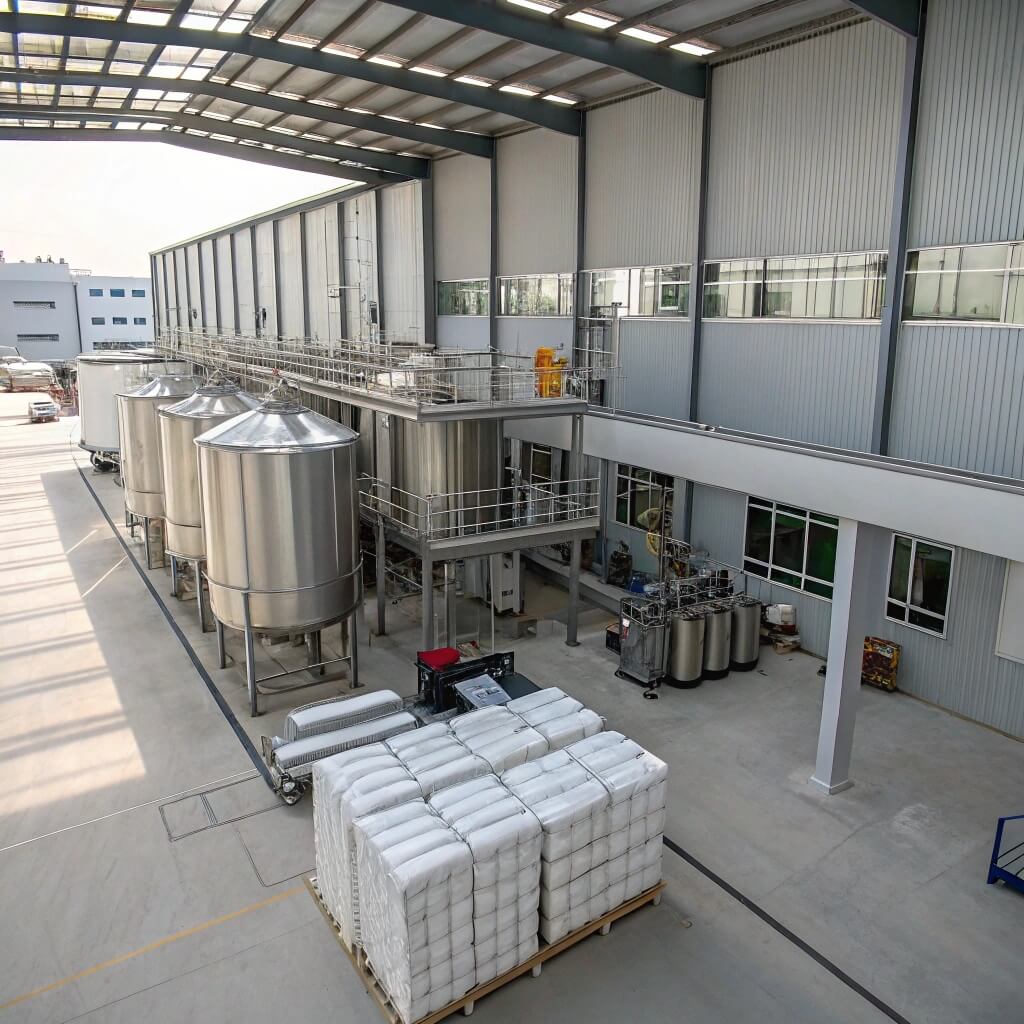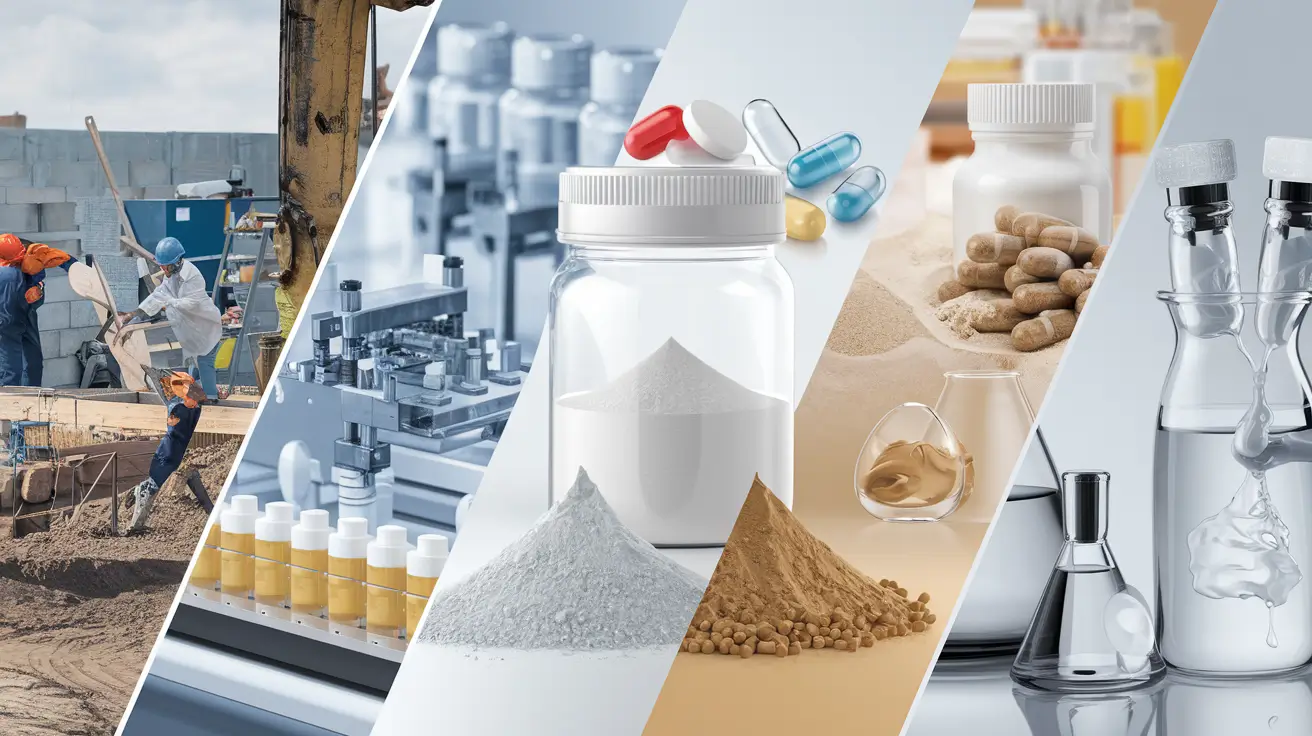Hydroxypropyl Methylcellulose (HPMC) is a versatile semi-synthetic polymer widely used across pharmaceutical, construction, food, and personal care industries. Its unique physicochemical properties make it an invaluable excipient and functional additive in countless formulations. This article examines the critical physicochemical characteristics that determine HPMC’s performance in various applications. Understanding these properties is essential for formulation scientists, product developers, and purchasing managers who need to select the optimal HPMC grade for specific applications. By exploring the molecular structure, solubility, rheology, and other key properties, this article provides practical insights for optimizing HPMC use in industrial products.

1. What Is The Molecular Structure That Defines HPMC’s Physicochemical Nature?
Hydroxypropyl Methylcellulose is a cellulose ether derived from natural cellulose through chemical modification. The transformation process involves treating cellulose with sodium hydroxide followed by reaction with methyl chloride and propylene oxide to introduce methoxyl and hydroxypropyl substituents onto the cellulose backbone.
Esto es lo que lo hace especial: The precise arrangement and ratio of these substituents create HPMC’s unique physicochemical profile, allowing formulators to select grades with properties tailored to specific applications.
The chemical composition of HPMC consists of a cellulose backbone with varying degrees of methoxyl and hydroxypropyl substitution. The methoxyl groups contribute hydrophobic character, while hydroxypropyl groups enhance hydrophilicity, creating an amphiphilic molecule with balanced properties.
| Parámetro estructural | Rango típico | Método de medición | Impacto en las propiedades |
|---|---|---|---|
| Contenido de metoxilo (%) | 16.5-30 | Cromatografía de gases | Un mayor contenido aumenta la solubilidad orgánica y la gelificación térmica. |
| Contenido de hidroxipropilo (%) | 4-32 | Cromatografía de gases | Higher content improves water solubility and surface activity |
| Grado de sustitución (DS) | 1.2-2.0 | NMR spectroscopy | Determina el equilibrio hidrofílico/hidrofóbico general |
| Peso molecular (daltons) | 10,000-1,500,000 | GPC/SEC | Determina la viscosidad y la resistencia mecánica. |
Substitution patterns in HPMC are not uniform along the cellulose chain but follow a statistical distribution. The three hydroxyl groups in each anhydroglucose unit have different reactivity, resulting in preferential substitution at certain positions. This non-uniform substitution contributes to HPMC’s complex solution behavior.
Molecular weight distribution significantly influences HPMC’s functional properties. Commercial HPMC grades typically have polydispersity indices between 2 and 5, indicating a relatively broad distribution of chain lengths. This distribution affects solution viscosity, mechanical properties of films, and dissolution kinetics.
2. How Do The Solubility Properties Of HPMC Influence Its Applications?
The solubility characteristics of HPMC represent one of its most commercially significant physicochemical properties, directly influencing its functionality across diverse applications.
What you might find surprising is that HPMC exhibits unusual temperature-dependent solubility behavior that can be strategically leveraged in various manufacturing processes and applications.
La solubilidad dependiente de la temperatura es quizás la característica más distintiva del HPMC. A diferencia de la mayoría de los materiales, que se vuelven más solubles con el aumento de la temperatura, el HPMC presenta un comportamiento de solubilidad inversa. A temperaturas más bajas (normalmente inferiores a 50 °C), el HPMC se disuelve fácilmente en agua para formar soluciones transparentes. A medida que aumenta la temperatura, la solubilidad disminuye hasta alcanzar una temperatura de precipitación (normalmente entre 65 y 90 °C), momento en el que el polímero experimenta una separación de fases y forma un gel termofijado.
| Rango de temperatura | Comportamiento de solubilidad de HPMC | Implicaciones de la aplicación | Consideraciones de procesamiento |
|---|---|---|---|
| Por debajo de 5°C | Disolución lenta, alta viscosidad. | Se necesita un tiempo de hidratación prolongado | La predispersión en agua caliente puede ser beneficiosa |
| 5-30°C | Disolución óptima, soluciones estables | Ideal para la mayoría de aplicaciones acuosas. | Condiciones de procesamiento estándar adecuadas |
| 30-50°C | Disminución de la solubilidad, claridad mantenida | Se requiere un control cuidadoso de la temperatura | Monitorear los cambios de viscosidad durante el procesamiento |
| 50-70°C | Acercándose a la insolubilidad, aumentando la turbidez | Puede causar inestabilidad en la formulación. | Considere la técnica de calor/frío para la dispersión. |
| Por encima de 70°C | Insoluble, forma un gel termoendurecible. | Puede utilizarse como barrera funcional. | Requiere enfriamiento para redisolución |
Solvent compatibility extends beyond water to include various mixed solvent systems. HPMC is soluble in many binary water-organic solvent mixtures, with solubility depending on the organic component and the HPMC substitution pattern. Typically, HPMC with higher methoxyl content shows better compatibility with organic solvents such as ethanol and propylene glycol.
Dissolution kinetics involve several stages. Initially, water penetrates the polymer particles, causing swelling and gel layer formation around each particle. As hydration continues, polymer chains disentangle and diffuse into the bulk solution. The rate-limiting step is typically the disentanglement and diffusion phase, influenced by particle size, molecular weight, and substitution pattern.
3. What Rheological Characteristics Make HPMC Valuable In Various Industries?
The rheological properties of HPMC—its flow and deformation behavior in solution—represent some of its most commercially valuable physicochemical characteristics. These properties determine how HPMC functions as a thickener, stabilizer, and processing aid.
Here’s the key insight: HPMC’s complex rheological behavior combines several beneficial properties that would typically require multiple additives, allowing formulators to achieve desired flow characteristics with a single ingredient.
Viscosity profiles across concentration ranges follow a power law relationship, with viscosity increasing exponentially as concentration increases. This relationship typically follows the equation η = K·C^a, where η is viscosity, C is concentration, and K and a are constants specific to the HPMC grade.
| Propiedad reológica | Método de medición | Valores típicos | Importancia de la aplicación |
|---|---|---|---|
| Viscosidad aparente | viscosímetro rotacional | 3-200.000 mPa·s (solución 2%) | Determina el comportamiento del flujo y la eficiencia del espesamiento. |
| Estrés de fluencia | Prueba de rampa de estrés | 0,5-20 Pa (solución 2%) | Controla la resistencia al hundimiento y la estabilidad de la suspensión. |
| Índice de tixotropía | Área del bucle de histéresis | 1.1-2.5 | Indica una recuperación dependiente del tiempo después del corte. |
| Módulo de almacenamiento (G') | Prueba oscilatoria | 1-500 Pa | Refleja el componente elástico y la resistencia del gel. |
| Loss Modulus (G”) | Prueba oscilatoria | 0.5-200 Pa | Indicates viscous component and flowability |
Shear-dependent flow behavior is another critical rheological characteristic of HPMC solutions. HPMC exhibits pseudoplastic (shear-thinning) behavior, where viscosity decreases as shear rate increases. This property provides significant processing advantages—solutions flow readily during high-shear operations like mixing, pumping, or spraying, but maintain higher viscosity at rest to provide stability.
Thixotropic and pseudoplastic properties often coexist in HPMC solutions. While pseudoplasticity refers to instantaneous viscosity reduction under shear, thixotropy involves time-dependent viscosity recovery after shearing stops. HPMC solutions typically show moderate thixotropy, with viscosity gradually returning to its original value after shear is removed.
4. How Do Surface And Interfacial Properties Of HPMC Affect Formulation Performance?
Las propiedades superficiales e interfaciales del HPMC desempeñan un papel crucial en numerosas aplicaciones, influyendo en fenómenos como la humectación, la extensión, la emulsificación y la estabilización. Estas propiedades se derivan de la naturaleza anfifílica del HPMC, que contiene grupos hidrofílicos e hidrofóbicos.
¿Qué hace que esto sea particularmente valioso? is that HPMC provides moderate surface activity without the drawbacks often associated with conventional surfactants, such as irritation potential or excessive foaming.
La capacidad de modificación de la tensión superficial del HPMC es significativa, aunque menos pronunciada que la de los surfactantes convencionales. El HPMC suele reducir la tensión superficial del agua de aproximadamente 72 mN/m a 42-55 mN/m, dependiendo del grado y la concentración.
| Propiedad superficial/interfaz | Método de medición | Valores típicos | Impacto de la formulación |
|---|---|---|---|
| Reducción de la tensión superficial | Método del anillo de Du Noüy | 42-55 mN/m (solución 1%) | Mejora la humectación y la distribución. |
| Tensión interfacial (aceite/agua) | Método de gota giratoria | 15-25 mN/m | Facilita la formación de emulsiones. |
| Ángulo de contacto sobre superficie hidrofóbica | Goniómetro | 40-65° | Mejora la humectación del sustrato. |
| Concentración de agregación crítica | Gráfico de tensión superficial | 0,01-0,1% p/v | Determina la concentración mínima efectiva |
Interfacial activity at liquid-liquid boundaries enables HPMC to function as an emulsion stabilizer. At oil-water interfaces, HPMC molecules orient with hydrophobic groups toward the oil phase and hydrophilic groups toward the water phase, reducing interfacial tension and forming a protective layer around droplets.
Adsorption behavior at solid-liquid interfaces makes HPMC valuable in applications involving particle suspensions or interactions with solid surfaces. HPMC adsorbs onto many solid surfaces through hydrogen bonding and hydrophobic interactions, forming a protective layer that prevents particle aggregation through steric stabilization.
5. What Thermal Properties Must Be Considered When Processing HPMC?
The thermal properties of HPMC significantly influence its processing requirements and application performance. Understanding these thermal characteristics is essential for proper material selection and process design.
But here’s what you need to know: HPMC exhibe un comportamiento térmico único que crea desafíos y oportunidades en el procesamiento y el desarrollo de aplicaciones.
El fenómeno de gelificación térmica representa la propiedad térmica más distintiva del HPMC. Cuando las soluciones de HPMC se calientan por encima de una temperatura crítica (normalmente entre 65 y 90 °C, según el grado), experimentan una separación de fases y forman una estructura de gel reversible.
| Propiedad térmica | Método de medición | Valores típicos | Implicaciones de procesamiento |
|---|---|---|---|
| Temperatura de gelificación | Punto de enturbiamiento, métodos reológicos | 65-90 °C (según el grado) | Determina la temperatura máxima de procesamiento en solución. |
| Temperatura de transición vítrea (Tg) | Calorimetría diferencial de barrido | 170-190°C | Afecta la estabilidad del procesamiento y almacenamiento del estado sólido. |
| Inicio de la estabilidad térmica | Análisis termogravimétrico | 190-220 °C | Establece el límite de temperatura superior para el procesamiento. |
| Temperatura de descomposición | Análisis termogravimétrico | 280-300°C | Parámetro de seguridad crítico para el procesamiento a alta temperatura |
La temperatura de transición vítrea (Tg) para HPMC seco suele oscilar entre 170 y 190 °C, aunque puede reducirse significativamente con la humedad o los plastificantes. La Tg representa la temperatura a la que el HPMC pasa de un estado vítreo y quebradizo a un estado más gomoso y flexible.
Thermal stability and degradation pathways are critical considerations for processing HPMC. The polymer begins to show signs of degradation at temperatures above 190-220°C, with significant decomposition occurring above 280-300°C. Degradation typically involves chain scission, resulting in reduced molecular weight and altered functional properties.
6. How Do The Binding And Film-Forming Properties Of HPMC Function?
The binding and film-forming capabilities of HPMC represent some of its most valuable functional properties, enabling applications ranging from pharmaceutical tablet formulation to construction adhesives and food coatings.
The critical factor to understand is that HPMC forms cohesive films and binding matrices through multiple physicochemical mechanisms, creating versatile performance characteristics that can be tailored to specific application requirements.
Adhesion mechanisms to various substrates involve several types of interactions. On polar surfaces like cellulose, glass, or metal oxides, HPMC adheres primarily through hydrogen bonding. On less polar surfaces, adhesion occurs through van der Waals forces and hydrophobic interactions with the methoxyl groups.
| Film/Binding Property | Método de medición | Factores influyentes | Application Relevance |
|---|---|---|---|
| Resistencia a la tracción | Tensile testing | Molecular weight, Concentration | Determines film durability and handling properties |
| Elongation at Break | Tensile testing | Tipo de sustitución, contenido de plastificante | Affects flexibility and resistance to cracking |
| Adhesive Strength | Peel or shear tests | Surface chemistry, Application method | Critical for binding and coating applications |
| Water Vapor Transmission Rate | Cup method, ASTM E96 | Film thickness, Substitution pattern | Determines moisture barrier properties |
The film formation process involves several stages. Initially, HPMC dissolves in water or a water-alcohol mixture to form a solution. As the solvent evaporates, polymer concentration increases, causing chain entanglement and eventual coalescence into a continuous film.
Las propiedades mecánicas de las películas de HPMC se pueden controlar con precisión mediante la selección del grado y la formulación. La resistencia a la tracción suele aumentar con el peso molecular, mientras que las propiedades de elongación se ven influenciadas por el tipo de sustitución: un mayor contenido de hidroxipropilo generalmente produce películas más flexibles.
7. What Analytical Methods Are Used To Characterize HPMC’s Physicochemical Properties?
Accurate characterization of HPMC’s physicochemical properties is essential for quality control, product development, and regulatory compliance. Various analytical techniques provide complementary information about different aspects of HPMC’s structure and behavior.
What’s particularly important to recognize is that comprehensive characterization requires multiple analytical approaches, as no single method can fully capture HPMC’s complex physicochemical profile.
Spectroscopic techniques for structural analysis provide information about HPMC’s chemical composition and substitution patterns. Fourier Transform Infrared Spectroscopy (FTIR) identifies characteristic absorption bands associated with methoxyl and hydroxypropyl substituents. Nuclear Magnetic Resonance (NMR) spectroscopy provides more detailed information about substitution patterns.
| Analytical Method | Information Provided | Sample Preparation | Limitaciones |
|---|---|---|---|
| Gas Chromatography | Methoxyl and hydroxypropyl content | Hydrolysis and derivatization | Destructive, no positional information |
| Size Exclusion Chromatography | Distribución del peso molecular | Dissolution in mobile phase | Requires calibration standards |
| Differential Scanning Calorimetry | Thermal transitions, glass transition temperature | Minimal preparation | Complex interpretation for heterogeneous samples |
| Rheometry | Viscosity profiles, viscoelastic properties | Solution preparation | Results depend on measurement conditions |
Chromatographic methods for molecular weight determination primarily rely on Size Exclusion Chromatography (SEC), also known as Gel Permeation Chromatography (GPC). This technique separates HPMC molecules based on their hydrodynamic volume, with larger molecules eluting earlier than smaller ones.
Thermal analysis approaches include Differential Scanning Calorimetry (DSC), which measures heat flow associated with thermal transitions such as the glass transition temperature (Tg). Thermogravimetric Analysis (TGA) monitors weight loss during heating, providing information about moisture content, thermal stability, and decomposition pathways.
Conclusión
The physicochemical properties of Hydroxypropyl Methylcellulose (HPMC) represent a complex interplay of structural features, molecular interactions, and environmental responses that collectively determine its performance across diverse applications. From its unique molecular structure and substitution pattern to its solubility, rheological, surface, thermal, and film-forming properties, HPMC offers a versatile functionality profile that few other polymers can match.
Understanding these properties allows formulators and technical professionals to select the optimal HPMC grade for specific applications and to anticipate how the material will behave under various processing and use conditions. The interrelated nature of these properties means that changing one parameter—such as substitution pattern or molecular weight—often affects multiple functional characteristics, requiring a holistic approach to grade selection and formulation development.
Para los fabricantes y desarrolladores de productos que trabajan con HPMC, este conocimiento se traduce en una selección de materiales más eficiente, un mejor rendimiento del producto y costos potencialmente reducidos a través de la optimización de la formulación.
Preguntas frecuentes
Q1: How do the physicochemical properties of HPMC vary between different commercial grades?
Commercial HPMC grades vary primarily in three key physicochemical properties: viscosity (determined by molecular weight), substitution type (ratio and distribution of methoxyl and hydroxypropyl groups), and particle size. Viscosity grades range from 3 mPa·s to over 200,000 mPa·s (2% solution), directly affecting thickening efficiency, film strength, and binding capacity. Substitution types are classified by pharmacopeia designations (e.g., HPMC 2208, 2906, 2910), with higher methoxyl content increasing thermal gelation and organic solubility, while higher hydroxypropyl content improves cold water solubility and surface activity. Particle size grades range from fine (20-75 microns) to coarse (125-250 microns), affecting dissolution rate and flow properties.
Q2: What impact do storage conditions have on the stability of HPMC’s physicochemical properties?
Storage conditions significantly influence the stability of HPMC’s physicochemical properties. Temperature extremes should be avoided—high temperatures (>40°C) can cause gradual degradation through oxidation or hydrolysis, potentially reducing molecular weight and viscosity. Humidity control is crucial, as HPMC can absorb moisture from the air, potentially leading to caking, viscosity changes, or microbiological growth if moisture content exceeds 10%. Light exposure, particularly UV radiation, may contribute to oxidative degradation over extended periods. Proper packaging in moisture-resistant containers and storage in cool, dry conditions (ideally 15-30°C, <60% relative humidity) help maintain HPMC’s physicochemical properties.
Q3: How do the physicochemical properties of HPMC compare to other cellulose ethers?
HPMC offers a distinct physicochemical profile compared to other cellulose ethers. Versus Methylcellulose (MC), HPMC provides better cold water solubility and lower thermal gelation temperatures, though MC forms stronger gels. Compared to Carboxymethylcellulose (CMC), HPMC is non-ionic and thus maintains stable viscosity across a wider pH range but provides less electrolyte tolerance and lower viscosity efficiency. Hydroxyethylcellulose (HEC) provides higher clarity in solution than HPMC but lacks thermal gelation properties and has lower surface activity. Ethylcellulose (EC) is water-insoluble unlike HPMC, making it suitable for water-resistant applications. Hydroxypropylcellulose (HPC) offers better organic solubility than HPMC but typically at higher cost.
Q4: Which physicochemical properties are most critical for pharmaceutical applications of HPMC?
For pharmaceutical applications, the most critical physicochemical properties of HPMC depend on the specific dosage form and function. In controlled-release matrix tablets, viscosity grade and substitution type directly determine drug release kinetics—higher viscosity grades create more robust gel layers that slow drug diffusion, while substitution type affects the hydration rate and gel strength. For tablet film coatings, molecular weight and substitution type influence film formation, adhesion, and dissolution characteristics, with HPMC 2910 (high methoxyl) often preferred for its film properties. In capsule manufacturing, thermal gelation temperature and gel strength are crucial for shell integrity. For ophthalmic solutions, solution clarity, viscosity stability, and biocompatibility are essential.
Q5: Can the physicochemical properties of HPMC be modified post-manufacturing?
While the fundamental molecular properties of HPMC (substitution pattern and molecular weight) are fixed during manufacturing, several post-production modifications can alter its functional physicochemical properties. Physical modifications include particle size reduction through milling to increase dissolution rate, surface treatment with glyoxal or other agents to improve dispersibility, and agglomeration to enhance flow properties. Blending different HPMC grades can achieve intermediate properties or performance profiles not available from standard grades. Formulation approaches can significantly modify HPMC functionality—adding salts to alter solution properties, combining with other polymers for synergistic effects, or incorporating plasticizers to modify film characteristics.




